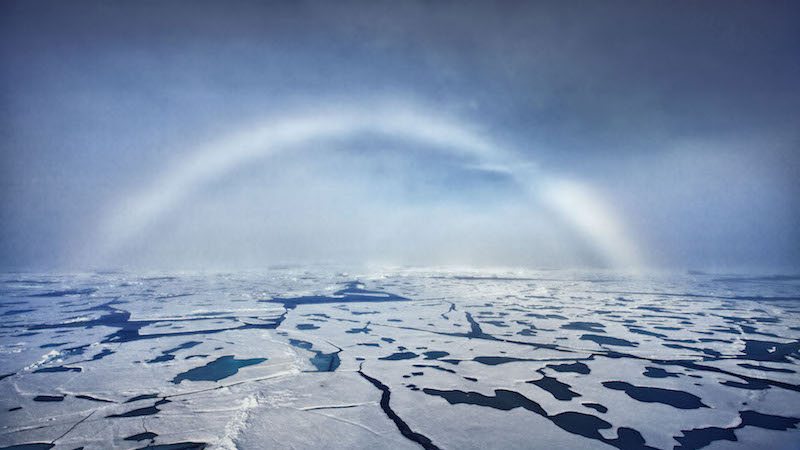White rainbow
Episode #3 of the course “Rare and Unusual Weather Phenomena”
When weather conditions are right, water droplets in the air refract light and typically create the multi-colored display that most people are familiar with—a rainbow. However, when the moisture is not rain droplets but rather fog droplets, the light is refracted differently because of the smaller size droplets. Water droplets in fog are only .5 millimeters, compared with rain droplets as large as 4 millimeters.
The smaller size water droplets in fog create what is known as a “white rainbow,” which is an arch across the sky that does not refract light, so the bow appears as white. Sometimes, white rainbows can have red and blue edges. White rainbows can also happen at night and are called “lunar fog bows.” They are also sometimes called “cloudbows” or “ghost of a rainbow.”
Observers can only see the fog bow if the sun is behind the bow, but they can occur at any time of day or anywhere in the world that there is mist or fog. White rainbows have been reported and photographed on every continent, as well as inside both the Arctic Circle and the Antarctic Circle.
Fog generally occurs under cool, moist air conditions, as it is basically a cloud low to the ground, so fog rainbows are more likely to occur on cooler days than warmer ones. They can also occur more frequently at dusk or dawn, or other times when the air temperature drops so that air moisture close to the ground can form droplets. White rainbows are not only rare, they are always breathtaking, and observers often make the most of photographing them before they quickly dissipate into the atmosphere.
Share with friends

